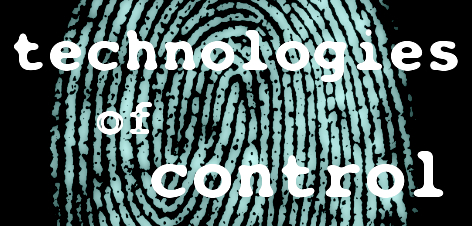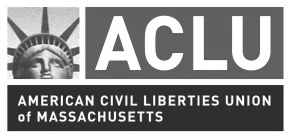If you've been confused or just puzzled about the Obama administration's love affair with Richard Nixon's "plugging leaks" obsessive madness, here is some recent history for your further enlightenment.
Almost too much information before it's time to pull that handle on the voting machine, isn't it?
Submitted by sosadmin on Sat, 04/07/2012
How can a President who vowed to strive for “an unprecedented level of openness in Government” and ordered the CIA to make sure it followed the Army Field Manual interrogation guidelines on his first day in office become so totally obsessed with stopping leaks at the expense of achieving transparency and accountability?
On April 3, 2012 the Obama Administration brought its first indictment against a CIA official involved in the torture morass carried out by the Bush Administration. Trouble is, John Kiriakou wasn’t personally responsible for the coercive techniques used on a captured al Qaeda suspect, Abu Zubaydah. Rather, he exposed what the CIA was doing in an ABC News interview and gave waterboarding its proper name: torture.
Kiriakou was arrested in January and accused of under the 1917 Espionage Act and the Intelligence Identities Act of leaking to the New York Times the name of the CIA agent who tortured Abu Zubaydah, a charge he strongly denied. He is the sixth whistleblower to be indicted under the 1917 Espionage Act brought by the Obama Administration. The full roster is here.
You would have thought the Administration would have learned something from its case against former NSA executive Thomas Drake, another whistleblower who sought “transparency” to reform NSA waste, mismanagement and abuse of power. A former Air Force pilot and CIA analyst, Drake favored a 3 million dollar terrorist hunting, data sifting project named ThinThread over the considerably more expensive $1.2 billion program called Trailblazer which did not include ThinThread’s privacy protections. Then-NSA head Michael Hayden opted for Trailblazer, which later had to be abandoned as a failure that was hundreds of millions of dollars over budget.
Drake had taken his concerns to senior agency officials but got nowhere. He had also testified before two Congressional inquiries about NSA shortcomings that contributed to the 9/11 attacks. In 2006, according to the prosecution, he sent classified documents to Siobhan Gorman, a reporter for the Baltimore Sun, who wrote articles critical of NSA mismanagement, including one in May 2006 headlined, “NSA rejected system that sifted phone data legally; Dropping of privacy safeguards after 9/11, turf battles blamed.”
The Obama Administration’s Espionage Act prosecution of Drake melted down after federal judge Richard Bennett ruled that the government would have to show to the jury some of the allegedly classified documents that Drake was accused of holding at home. This led prosecutors to withdraw four of the documents and redact information from another two about “NSA’s targeting of a particular telecommunications technology.”Drake had faced up to 35 years in prison. He was then offered a plea deal which he was originally reluctant to take as he did not want to admit he had committed a crime. He finally agreed to plead guilty to a misdemeanor of misusing the agency’s computer system by providing information to a Baltimore Sun reporter.Although journalists haven’t (yet) been charged under the Espionage Act they are feeling the heat. New York Times journalist James Risen was served with a subpoena ordering him to testify at the trial of former CIA officer Jeffrey Sterling, who is suspected of leaking information about the Agency’s failed attempt to sabotage Iran’s nuclear program under the Clinton Administration.
Risen, who wrote about the sabotage attempt in his book State of War, has said he would fight the subpoena: “I will always protect my sources, and I think this is a fight about the First Amendment and the freedom of the press.” He wrote in a June 2011 affidavit sent to the US District Court in the Eastern District of Virginia that “I have learned from an individual who testified before a grand jury in this District that was examining my reporting about the domestic wiretapping program that the Government had shown this individual copies of telephone records relating to calls made to and from me."
Waiting in the wings but yet to be charged is a former CIA acting general counsel, John Rizzo. The Justice Department is investigating whether he released classified information when he told Newsweek how CIA officials chose suspects for their drone strikes (“ready for prime time”) and the protocol followed when he signed off on their death sentences.
Wouldn’t it be something if “the most influential career lawyer in CIA history” were to find himself indicted under the Espionage Act? At one point that would have seemed just about as unlikely as the about face on so many Constitutional issues carried out by the Obama Administration.
_ _ _ _ _ _ _Apr 6, 2012The 1%’s Most Dangerous Lies
Pernicious myths about the role of corporations are ruining the economy. Here's how to fight back

Robert Neuwirth types on an old-fashioned typewriter as part of an art project in Zuccotti Park before a march to celebrate the protest's sixth month, Saturday, March 17, 2012, in New York. (AP Photo/John Minchillo) (Credit: AP)
This originally appeared on AlterNet. It's the final essay in a five-part series analyzing the foundations, history and purpose of the corporation to answer this vital question: How can the public take control of the business corporation and make it work for the real economy?
The wealth of the American nation depends on the productive power of our major business corporations. In 2008 there were 981 companies in the United States with 10,000 or more employees. Although they were less than two percent of all U.S. firms, they employed 27 percent of the labor force and accounted for 31 percent of all payrolls. Literally millions of smaller businesses depend, directly or indirectly, on the productivity of these big businesses and the disposable incomes of their employees.
When the executives who control big-business investment decisions place a high priority on innovation and job creation, then we all have a chance for a prosperous tomorrow. Unfortunately, over the past few decades, the top executives of our major corporations have turned the productive power of the people into massive and concentrated financial wealth for themselves. Indeed the very emergence of “the 1 percent” is largely the result of this usurpation of corporate power. And executives’ use of this power to benefit themselves often undermines investment in innovation and job creation.
These corporations do not belong to them. They belong to us. We need to confront some powerful myths of corporate governance as part of a movement to make corporations work for the 99 percent. To start, we have to recognize these corporations for what they are not.
• They are not “private enterprise.”
• They should not be run to “maximize shareholder value.”
• The mega-millions in remuneration paid to top corporate executives are not determined by the “market forces” of supply and demand.
Let’s take a closer look at each of these myths.
1. Public corporations are not private enterprise.
Here’s something you’ll rarely hear stated by today’s politicians and pundits: Publicly listed and traded corporations are not private enterprise. As documented by the pre-eminent business historian Alfred D. Chandler, Jr., in a book aptly called “The Visible Hand,” about 100 years ago the managerial revolution in American business placed salaried managers in charge of running the nation’s largest and most productive business corporations.
This was a peaceful revolution in which a generation of owner-entrepreneurs who had founded these companies some decades earlier used initial public offerings on the New York Stock Exchange to sell their ownership stakes to the public, leaving decision-making power in the hands of salaried managers. In effect, these corporate employees, and the boards of directors whom they selected, became trustees of the immense productive power that these corporations had accumulated.
Even when founders of companies that evolve into major public corporations become their CEOs, they generally occupy the top positions as corporate employees, not owners. For example, when the late Steve Jobs returned to Apple Computer in 1997, 11 years after being denied the CEO position of the company he had founded, his ascent to the top position was as a manager, not on owner. When a company founder like Larry Page of Google gives up private ownership by publicly selling shares, he may become CEO of the new corporation, but he is occupying this position as a hired hand, not as a private entrepreneur.
In other words, private owners make choices to transform a private enterprise into a public company that then needs to be regulated as such. There are other choices that could have been made. When the retiring owner of a private company wants to pass on control over a prosperous company to his or her employees, an alternative to the public corporation is to establish an Employee Stock Ownership Plan, or ESOP. There are many successful companies in the U.S. that are not public corporations precisely because they are under the collective ownership of their employees.
It is also possible for some investors to agglomerate sufficient shares to take a public company private (Mitt Romney made his millions doing just that), but that only emphasizes the point: public corporations are not private enterprise. We regulate public corporations far more stringently than private businesses precisely because they are publicly held. And as U.S. citizens, how we regulate public corporations (or even private businesses, for that matter) is up to us.
2. Corporations should be run to benefit everyone who contributes to their success – not just shareholders.
It’s a myth that corporations have a legal duty to maximize profits to shareholders at the expense of everyone else. Historically, the executives and directors of U.S. public corporations understood that they had a responsibility to other constituencies – customers, employees, suppliers, creditors, the communities in which they operate, and the nation.
Today, however, the dominant ideology is that a corporation should “maximize shareholder value.” At the most basic level, the rationale for this ideology is that shareholders own the company’s assets, and therefore have exclusive claim on its profits. A more sophisticated argument is that that among all stakeholders in the business corporation only shareholders bear the risk of getting a positive return from the firm, while all other participants receive guaranteed returns for their productive contributions. If society wants risk-bearing, so the argument goes, firms need to return value to shareholders.
This argument sounds logical – until you question its fundamental assumption. Innovation, defined as the process that generates goods or services that are higher quality and/or lower cost than those previously available, is an inherently uncertain process. Anyone who invests their labor or their capital in the innovation process is taking a risk that the investment may not generate a higher quality, lower cost product. Once you understand the collective and cumulative character of the innovation process, you can easily see that the assumption that shareholders are the only participants in the business enterprise who make investments in productive resources without a guaranteed return is just plain false. In an innovative economy, workers and taxpayers habitually make these risky investments.
How do workers make these risky investments? As is generally recognized by employers who declare that “our most important assets are our human assets”, the key to successful innovation is the extra time and effort, above and beyond the strict requirements of the job, that employees expend interacting with others to confront and solve problems in transforming technologies and accessing markets. Anyone who has spent time in a workplace knows the difference between workers who just punch the clock to collect their pay from day to day and workers who use their paid employment as a platform for the expenditure of creative and collective effort as part of a process of building their careers.
As members of the firm, these forward-looking workers bear the risk that their extra expenditures of time and effort will not yield the gains to innovative enterprise from which they can be rewarded. If, however, the innovation process does generate profits, workers, as risk-bearers, have a claim to a share in the forms of promotions, higher earnings and benefits. Instead, shareholder-value ideology is often used as a rationale for laying off workers whose hard and creative work has contributed to the company’s success. That’s grossly unfair.
Taxpayers also invest in the innovation process without a guaranteed return. Through government agencies, taxpayers fund infrastructural investments that, given their cost and the uncertainty of returns, business enterprises would not have made on their own. It is impossible to explain U.S. leadership in information technology and biotechnology without recognizing the role of government in making investments to develop new knowledge and facilitate its diffusion. As one example, the current annual budget of the National Institutes of Health is about $31 billion, twice in real terms its level in the early 1990s. Without this government expenditure on research, year in and year out, we would not have a medicinal drug industry. Yet shareholder-value ideology is often used to justify low taxes that deny taxpayers a return on these investments.
So shareholder-value ideology provides a flawed rationale for excluding workers and taxpayers from sharing in the gains of innovative enterprise. To turn this ideology on its head, what risk-bearing role do public shareholders play in the innovation process? Do they confront uncertainty by strategically allocating resources to innovative investments? No. As portfolio investors, they diversify their financial holdings across the outstanding shares of existing firms to minimize risk.
They do so, moreover, with limited liability, which means that they are under no legal obligation to make further investments of “good” money to support previous investments that have gone bad. Even for these previous investments, the existence of a highly liquid stock market enables public shareholders to cut their losses instantaneously by selling their shares – what has long been called the “Wall Street walk”.
3. Executive compensation is a rigged game, not the result of the laws of supply and demand.
You often hear that stratospheric executive pay is the result of some inexorable law of supply and demand. If we don’t give top executives their multimillion dollar compensation, they won’t be willing to come to work and do their jobs. They are supposedly the bearers of “scarce talent” that demands a high price in the market place. Even Robert Reich, Secretary of Labor in the Clinton administration and a critic of U.S. income inequality, has justified the explosion in executive pay, arguing that intense competition makes it much more difficult than it used to be to find the talent who can manage a large corporation (“Supercapitalism,” 2008, pp 105-114).
That is not what determines executive pay. Here is how it works: Top executives select other top executives to sit on “their” boards of directors. These directors hire compensation consultants to recommend an executive pay package, which consists of salary, bonus, incentive pay, retirement benefits, and all manner of other perks. The consultants look at what top executives at other major corporations are getting, and say that, well, this executive should get more or less the same. Since the directors are mostly these very same “other executives”, they have no interest in objecting – and if any of them were to do so, they would find that they are no longer being invited to sit on corporate boards.
Meanwhile, given the preponderance of stock-based compensation (especially stock options) in executive pay, whenever there is speculative boom in the stock market, top executives of the companies with most rapidly rising stock prices make out like bandits. The higher compensation levels then create a “new normal” for executive pay that, via the compensation consultants and compliant directors, ratchets up the pay of all the top dogs. And, when the stock market is less speculative, these corporate executives do massive stock buybacks to push stock prices up.
What we have here is not “market forces” at work but an exclusive club that promotes the interests of the 0.1 percent. All too often executives allocate corporate resources to benefit themselves rather than to invest in innovation and job creation. It is time that the 99 percent see through the ideology, break up the club, and get the U.S. economy back on track.
Corporate power for the people!
Business corporations exist as part of the collective and cumulative development of our economy. The investments in innovation and job creation that these corporations make or decline to make are key to our future prosperity. Public shareholders, the supposed owners of these corporations, are in general only willing to hold shares in a company because of the ease with which they can terminate this relation by selling their shares on the stock market. Yet, almost unanimously, corporate executives proclaim that they run their companies for the sake of shareholders. In fact, their personal coffers pumped up with stock-based compensation, our business “leaders” have increasingly run the corporations for themselves.
The real corporate investors are taxpayers and workers. Through government agencies at federal, state, and local levels, taxpayers supply business corporations with educated labor and physical infrastructure. Through their interaction in business organizations, workers expend the time and effort that can generate innovative products. In the name of shareholder value, however, taxpayers and workers have been losing out. It’s time to confront the myths of “private enterprise”, “shareholder value”, and “market-determined executive compensation” with arguments about how the innovation process actually works with sustainable prosperity as the result.
What will it take to build a movement that can make the business corporation work for the 99 percent ?
We have to elect politicians who will take on corporate power rather than shill for corporate power-brokers. We have to support labor leaders who recognize that gaining a voice in corporate governance is the only way to ensure that corporations will invest in workers and create good jobs. We need teachers at all levels of the education system who understand what business corporations are and what they are not. We need the responsible media to escape from the grip of corporate control. And we have to put in place business executives who represent the interests of civil society rather than those of an elite egotistical club.
Getting Involved
- April 25: National Day of Action Against Student Debt
On April 25th, the total amount of student loan debt in the U.S. is due to top 1 trillion dollars. This staggering economic milestone marks a momentous victory for Wall Street and the 1 percent against two generations of students and families. A day of action will target big banks and student lenders, as well as increasingly corporatized universities.
-May 1st: May Day
Recognized worldwide as International Workers’ Day, May 1st marks the Haymarket Massacre of 1886 in Chicago, where workers were fighting for the eight hour workday. Look for rallies and gatherings across the country that will draw attention to the needs and concerns of workers.
-Move Your Money
The Move Your Money campaign was launched in 2010 to take on the power of the megabanks that helped cause the financial crisis and continue to wreak havoc on our economy. Numerous ongoing actions around the country are calling attention to the need for fairness and accountability in the banking industry (read about the latest: “Move Your Money” Goes Nationwide As Cities Pull Their Money”)
-Occupy Wall Street
The leaderless resistance movement continues to take on the greed and corruption of the 1 percent, including a recent day of action for public transit workers. Check the website for gatherings and actions in your community.






































No comments:
Post a Comment